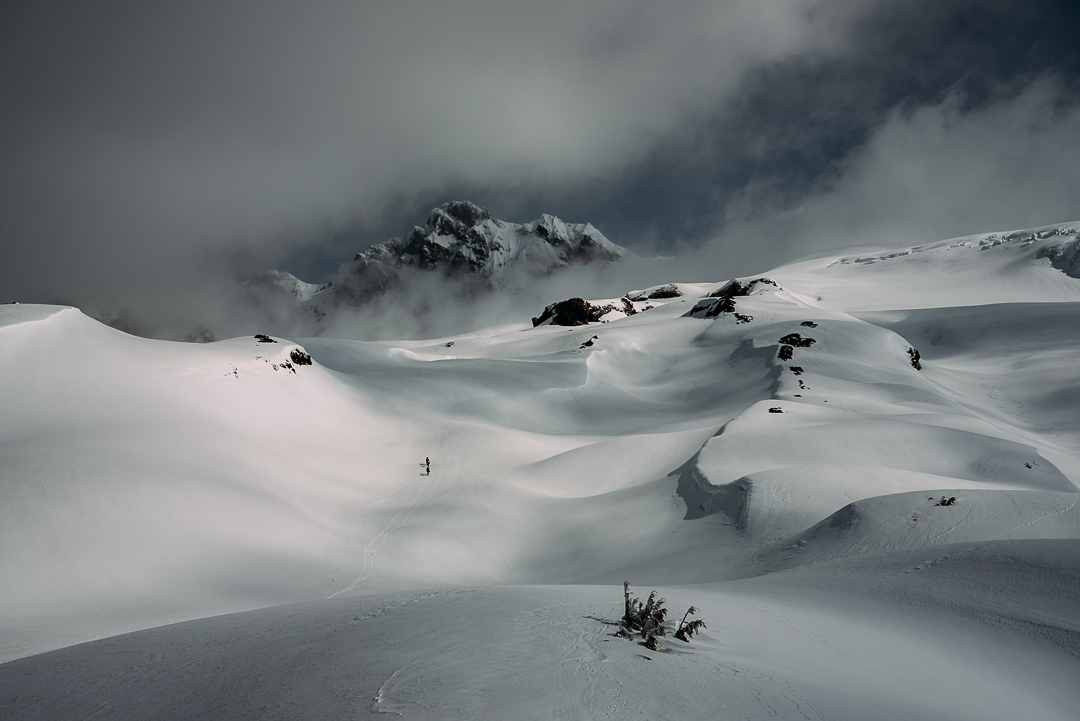In a recent story, we highlighted three classic ski mountaineering races—all European-based. Land use policies are different in Europe (and in each respective European country, for that matter). Organized mountain races in Europe often pass through high elevation and exposed terrain. Here in the U.S., similar terrain is frequently off-limits to organized races due to management restrictions. For example, federal wilderness is usually off-limits to organized races. Some exceptions exist, like the Western States 100 ultra race, where roughly four miles of the 100-mile course pass through designated wilderness.
If you’re a race organizer, and you are visioning a route that approximates the grandeur of a course like the PDG, the out-of-wilderness options are thin. A small group of race enthusiasts led by SnowGoat Skimo’s Richard Kresser ran the inaugural Kulshan Randonnée on the flanks of Kulshan (Mount Baker) which rises east of Bellingham, Washington.
The course gains roughly 11,000ft over 22 miles and reaches two high points—one on the Easton Glacier and the other on the Squak Glacier.
Similar to the PDG, this is a team race: the 2024 race was limited to 25 teams of three. The Kulshan Randonnée is not a show-up and strip down to your Lycra affair. Each participant/team must pass a mandatory skills test demonstrating mastery of skills related to glacier travel. The skills are listed below:
- Setup for glacial travel (proper knots, distance between skiers, extra rope secured, etc.)
- Simple crevasse rescue 3:1 haul system setup (anchor setup, transfer of load, 3:1 system creation)
- Rope ascension (ascend rope fixed amount using prusiks/ascenders)
Last year, the race’s first, ran in mid-May. Those accustomed to or familiar with the Grand Traverse from Crested Butte to Aspen know that the GT begins at midnight. Racers opting for the Kulshan Randonnée should get a nice night’s sleep; the race start time is 8A. (You can find more details in the racer’s manual.)
We sent Kresser a few questions to learn more about the organizing process. The course does not encroach on the mountain’s designated wilderness area. Race organizers will release the date for the 2025 Kulshan Randonnée next November. We’ll contact race organizers again next fall to learn more about the event.





